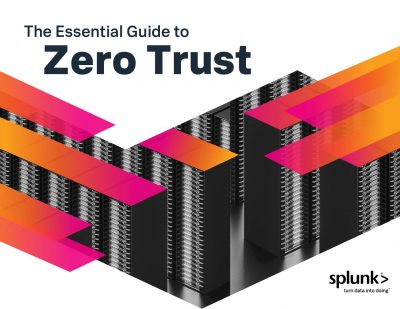Highlights:
- SSRF attacks commonly target sensitive data. Attackers manipulate servers with malicious URLs to extract system information, escalating the threat. For instance, attackers can inflict significant damage by accessing server credentials—higher privileges pose greater risks.
- Denial of service (DoS) attacks inundate servers with requests, leading to crashes. An SSRF-based DoS attack focuses on internal network servers, often less equipped to handle high traffic.
Surprisingly, server-side request forgery (SSRF) optimizes operational efficiency by improving internal services’ communication and function. By addressing SSRF vulnerabilities, organizations can streamline their internal processes, enhance security measures, and reduce system downtime.
Thousands of new vulnerabilities arise daily, presenting hackers with fresh opportunities. These cybercriminals never rest; they persistently target your systems. Staying ahead of emerging vulnerabilities is crucial.
Staying ahead of emerging vulnerabilities is crucial. Let’s dig into the impact of server-side request forgery vulnerability, risks, mitigation strategies, and more.
What Is the Impact of Server-side Request Forgery Attacks on Augmenting Operational Effectiveness?
An effective SSRF attack gives a hacker control over the target web server, allowing them to carry out malicious operations or reveal private data. This technique seriously threatens organizations because it leaves several vital targets open to SSRF attacks.
-
Sensitive data exposure
SSRF attacks commonly target sensitive data. Attackers manipulate servers with malicious URLs to extract system information, escalating the threat. For instance, attackers can inflict significant damage by accessing server credentials—higher privileges pose greater risks. Gaining admin credentials grants control over the entire server, amplifying the severity of the breach.
-
Cross-site Port Attack (XSPA)
While not all SSRF attacks yield sensitive data, attackers can glean server and network metadata for reconnaissance. Response times, for instance, indicate successful requests. Armed with valid host and port pairs, attackers can scan networks for ports, enabling cross-site port attacks.
Network connection timeouts remain consistent across ports and hosts. Attackers exploit this by sending requests guaranteed to fail, establishing a response time baseline. Successful requests deviating from this baseline reveal potential vulnerabilities, aiding in service fingerprinting and protocol smuggling attacks.
-
Denial of Service (DoS)
Denial of Service (DoS) attacks inundate servers with requests, leading to crashes. An SSRF-based DoS attack focuses on internal network servers, often less equipped to handle high traffic. These servers, designed for lower bandwidth due to lower request volumes, become vulnerable. Attackers exploit SSRF to flood the internal servers with requests, consuming available bandwidth and causing crashes.
-
Remote Code Execution (RCE)
Web services with HTTP-based interfaces are susceptible to exploitation if servers lack URL access protections. Attackers may exploit these vulnerabilities to gain server access, enabling remote code execution attacks. This capability allows attackers to execute malicious code, potentially causing significant system damage.
These attacks can lead to unauthorized data access, internal system manipulation, and significant security breaches. With the severity of these risks in mind, it becomes essential to explore effective mitigation techniques.
What Are Some Server-side Request Forgery Mitigation Techniques to Amplify Operational Efficiency?
Mitigating server-side request forgery attacks is critical for enhancing security and boosting operational efficiency. Effective techniques include:
-
Using Firewalls to mitigate SSRF
Organizations commonly implement firewall policies to regulate which hosts’ applications can connect to mitigate server-side request forgery. These firewalls may be positioned within the network infrastructure or directly on the host. However, firewall-based protection has limitations:
- Host-based firewalls may struggle to differentiate between legitimate application connections and those initiated by other software on the same node.
- Firewalls might block outbound connections but still permit certain internal network connections. An alternative solution is employing an HTTP CONNECT proxy. This proxy forwards all traffic and enforces ACLs to govern permitted destinations. This method relies on the application supporting HTTP CONNECT and being able to route traffic accordingly, which is typically the case.
-
Using application controls to mitigate with SSRF
To mitigate SSRF, application layer controls can be implemented to verify if a target address is permitted before establishing a connection. However, simply checking the address and connecting is insufficient as it leaves vulnerabilities related to “time-of-check” and “time-of-use.”
Attackers can exploit these vulnerabilities by controlling a DNS server and rapidly changing the target address in subsequent DNS queries with short TTL values. To address this, lower-layer hooks can be utilized to enforce classless inter-domain routing (CIDR) checks and restrict HTTP redirects, providing additional layers of protection against SSRF attacks.
-
Utilizing DNS resolution and allowlists
To prevent server-side request forgery, establish an allowlist of authorized hostnames (DNS names) or IP addresses for application access. Alternatively, implement a denylist and thoroughly validate user input against it, blocking requests to endpoints with private (non-routable) IP addresses. Tailor the scope of denied addresses to suit your application’s unique characteristics and environment.
-
Authenticating internal services
Enabling authentications for all services within your local network is crucial to prevent unauthorized access, primarily through server-side request forgery attacks targeting caching services and NoSQL databases that often lack default authentication.
This security measure helps safeguard sensitive information and aligns with the principles of zero trust security, ensuring that access is granted only to authenticated and authorized users or systems.
-
Hardening cloud services
Amazon Web Services server-side request forgery, Azure, and other cloud vendors offer SSRF mitigation by hardening their configurations, such as AWS preventing access to cloud service metadata from containers.
However, these built-in protections are not foolproof.
Attackers can still exploit vulnerabilities, such as using a headless web engine like Chromium, to bypass some safeguards. Therefore, it is crucial to implement robust identity and access management (IAM) service policies that strictly limit the permissions of your Application Programming Interfaces when they interact with cloud services, ensuring they only have access to what is necessary for their function.
-
Response handling
Applications must verify every response and ensure the client is never shown the raw response body of a request to shield response data from disclosure to an attacker.
-
Disable unused URL schemas
Most applications only request HTTP or HTTPS, so only these URL patterns should be allowed. Disable old or atypical URL schemes such as file:///, dict://, ftp://, and gopher:// to prevent attacks exploiting these protocols.
Having explored various mitigation techniques to strengthen operational efficiency against server-side request forgery attacks, it’s imperative to also consider proactive measures for identifying hidden attack surfaces.
Identify Hidden Attack Surface for Services Server-Side Request Forgery Vulnerabilities To Bolster Operational Workflows
Many server-side request forgery (SSRF) vulnerabilities are easy to find because the application’s regular traffic involves request parameters containing complete URLs. However, other examples of SSRF are more complex to locate.
- Partial URLs in requests
Sometimes, an application inserts only a hostname or a portion of a URL path into request parameters. Subsequently, the value submitted is assembled server-side into a complete URL that is then requested. While recognizing the value as a hostname or URL path may make the potential attack surface apparent, the exploitability as full SSRF might be restricted because you lack control over the entire URL requested.
- URLs within data formats
Some applications transmit data in formats that include URLs, which the data parser might request. A common example is the XML data format, which is widely used in web applications for transmitting structured data. When an application accepts and parses XML data, it might be vulnerable to XXE (XML External Entity) injection. This vulnerability can also lead to SSRF via XXE.
- SSRF via the referer header
Some applications utilize server-side analytics software to track visitors, often recording the referer header in requests to monitor incoming links. The analytics software might visit any third-party URLs in the referer header to analyze referring sites, including anchor text in the links. This behavior makes the referer header a potential attack surface for SSRF vulnerabilities.
Conclusion
Server-side request forgery attacks and vulnerabilities pose significant threats to organizational security, allowing hackers to gain control over web servers, access sensitive data, and execute malicious operations.
These attacks exploit vulnerabilities in various areas, including sensitive data exposure, cross-site port attacks, denial of service (DoS), and remote code execution (RCE).
Mitigating server-side request forgery attacks is crucial for enhancing security and operational efficiency. Techniques such as firewall implementation, application controls, DNS resolution, authentication of internal services, and hardening cloud services offer effective defense mechanisms.
Proactive measures for identifying hidden attack surfaces further bolster operational workflows and minimize the risk of SSRF incidents.
Enhance your expertise by accessing a range of valuable security-related whitepapers in our resource center.









































































